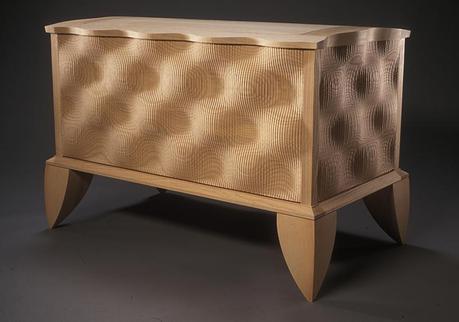
Blanket Chest by Richard Tannen
Perhaps your experience in appreciating furniture design is limited to selecting pieces for your own home, or enjoying your favorite table, chair, or desk.
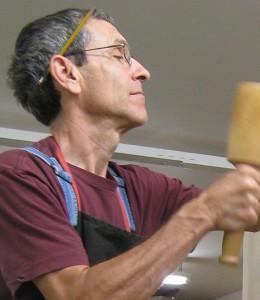
Richard’s furniture is displayed in art galleries, featured in trade, design, and art publications. He has earned much recognition for his work, and in addition to his teaching position he has conducted several panels and workshops for other members of his trade.
We were fortunate to be able to ask Richard a few questions about his work and the future of furniture design.
Goedeker’s: Your career has spanned both teaching for two decades and a working furniture studio. What are some of your favorite projects?
Richard Tannen: Though clichéd, my favorite project is often the one I’m working on at the time. That’s because what I love most about this work is the process; the process of designing and physically creating something tangible, something with a purpose that might become a part of someone’s life for many years, even for generations. The lifelong process of creative problem solving and cultivating a set of skills that combine the best of theory, judgment, experience and dexterity provides an enduring satisfaction that transcends individual projects.
That being said, one distinct favorite of mine is a project I designed for students some 25 years ago, that we still use today. It involves designing and building a structure (chair) that can be sat on by a 200 pound person, using only very thin wood sticks. No conventional joinery may be used, only hot glue and screws. It is about structure, material sensibility, ergonomics, craftsmanship and aesthetics all coming together in an act of hands-on experimental problem solving, with a minimal intrusion of technique. It levels the playing field for students at all stages of technical development and focuses on the core issues of furniture design. It’s both informative and a lot of fun.
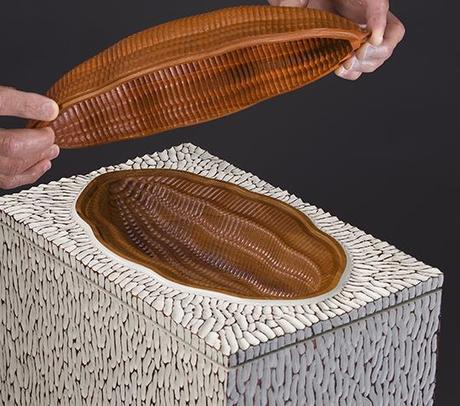
Wooden Container by Richard Tannen.
Goedeker’s: Rochester Institute of Technology’s furniture design program seems to offer a lot with woodworking. Why is wood important in modern furniture design?
Richard Tannen: Furniture design embraces a wide range of materials, as it should, and wood remains an excellent material option for furniture. Wood has a wonderful warmth and sensuous, tactile quality. Its good flexibility, excellent strength-to-weight ratio and beautiful aesthetic range also make it a potentially wise choice. We believe that one should choose the most appropriate material for the design, whatever that might be. In terms of our teaching choices, we are expanding our material investigation offerings for the program. However, we also believe that to experience one material (e.g.-wood) in great depth is to be a wiser designer in all materials. We favor depth over breadth. Understanding the importance to the design process of developing a sophisticated and intimate knowledge of a material can only be taught by experience through an intensive hands-on learning process.
Goedeker’s: How has the improved access to technology (such as CNC machines) changed the world of furniture design?
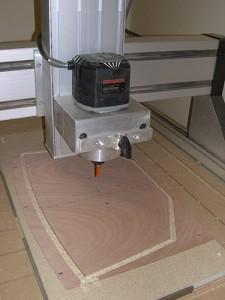
A CNC machine takes computer design concepts and creates them in the real world.
Richard Tannen: To truly address this questions is beyond the scope of this interview. Technological developments has been influencing the field of furniture design for thousands of years, and certainly digitally-based technologies like CNC, CAD and 3-D printing technology have been influential. They are terrific design and manufacturing aids when used creatively and wisely. They have certainly become more accessible to smaller shops and individual designers, as the pricing has come down and the quality continues to improve. This impacts many aspects of the process, from modeling designs in progress to studying structure and creating efficiencies in manufacturing and inventory, etc. There are people far more knowledgeable and experienced than I to talk about the impact on the larger furniture manufacturing industry. However, good design is still good design, and I believe just as many great ideas today begin on the back of a napkin, as they ever did.
Goedeker’s: What skills are crucial for a furniture designer to develop during their undergraduate education?
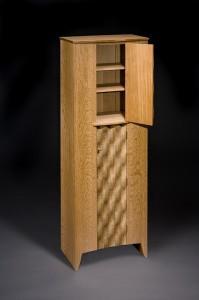
Cupboard by Richard Tannen
Richard Tannen:I believe there are several crucial skills that school is uniquely well prepared to address. Foremost among them is the development of a viable design process. The tools most commonly associated with the design process are things like sketching, both small and full-sized, modeling, both in real materials and 3-D computer, creating mockups, prototyping and full size samples of things like cross-sectional details, joint transitions, etc. Everyone will eventually come to emphasize certain tools in this repertoire more than others. Our responsibility is to provide experience and insight into the full spectrum of these tools and give students the opportunity to experiment and eventually develop an approach that works best for them. The choices they make about all things related to design and construction should come from a position of knowledge and strength, never ignorance.
There have been a number of articles in the media recently attempting to track national hiring trends in fields like architecture and design. Certainly evidence of some field-related skills is important, but prospective employers are clearly placing a strong emphasis on creative problem solving. They want to hire people who can generate ideas and think creatively, more than simply demonstrate a competence with the most current software packages. We present the students with carefully sequenced, progressively more sophisticated design challenges that encourage the development of these more abstract skills. And, we continually engage in ongoing individual and group discussions and critiques about their progress in addressing these challenges.
We also believe strongly in the development of technical skills. Important among these skills is the use of traditional woodworking hand tools. We do this, not based on a romantic notion about the wonder of hand-work, but because they provide great insight into ideas about process and help to develop an intimacy with the material, a strong material sensibility that becomes an essential element in good design.
Goedeker’s: What are some skills that you developed and learned later in your career, or are still working to improve?
Richard Tannen: Certainly my CAD and CNC skills were developed later in my career, and I’m still working to improve them. At first I believed they had little to offer me and my students in terms of influencing personal work. I got involved with them out of a sense of responsibility to provide them for my students as manufacturing and presentation aids. However, I came to discover that there were ways in which they might be useful to me personally, especially with regard to my explorations of the relationship between form and texture and the expressive range of the material. This in turn expanded my view of the role they might play for my students. This all came directly out of my hands-on experimentation with these technical processes. My “craft” approach helped them to become strong influences in my design process. Craft is not simply the technical component of design. Craft is many things, important amongst them is an approach to design and creativity that springs from a sophisticated hands-on material sensibility.
Goedeker’s: You get to work with future furniture designers on a regular basis. What trends do you see rising in the near future of furniture design?
Richard Tannen: I see students who are interested in incorporating a broader range of materials. This comes from less interest in simply being a “woodworker” and more interest in being a great designer. I see this as a very healthy trend. I also see more students with a stronger entrepreneurial spirit. They want to combine their designing and making skills with good business and marketing skills. They are thinking about both the idealistic motivations that attracted them to this field in the first place and also the practical issues of making a living and developing a strong reputation. This, also, is very healthy and encouraging. These students are also embracing digital technology and the ways in which it can be used creatively to increase efficiencies and push the design envelope. All of this means that smaller studios can have greater impact on the field at large. They tend to be more adventurous than larger companies and more flexible in their abilities to experiment, embrace new ideas and new technology and able to change and adapt more quickly as they respond to the market and to their own developing creative ideas.
You can see more of Richard Tannen’s work at RichTannen.com.
For more information about Rochester Institute of Technology’s Woodworking and Furniture Design Program at the School for American Crafts, visit RIT.edu.

